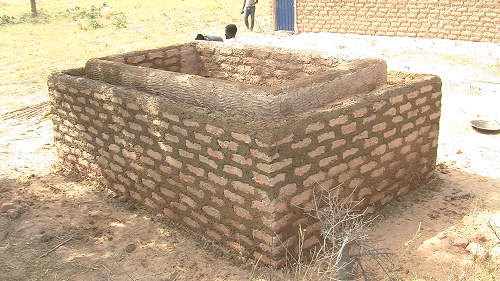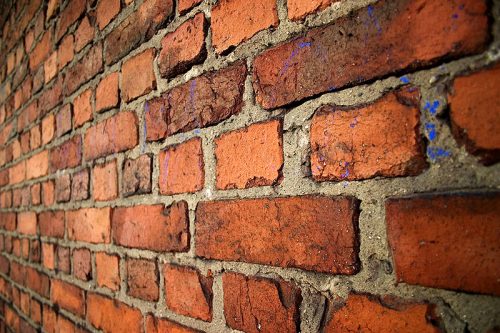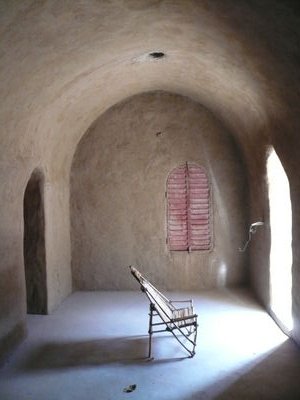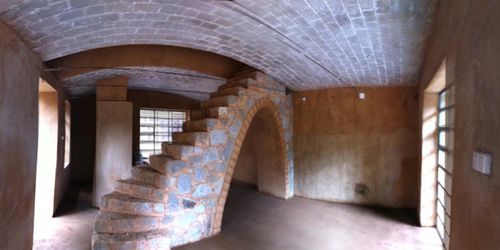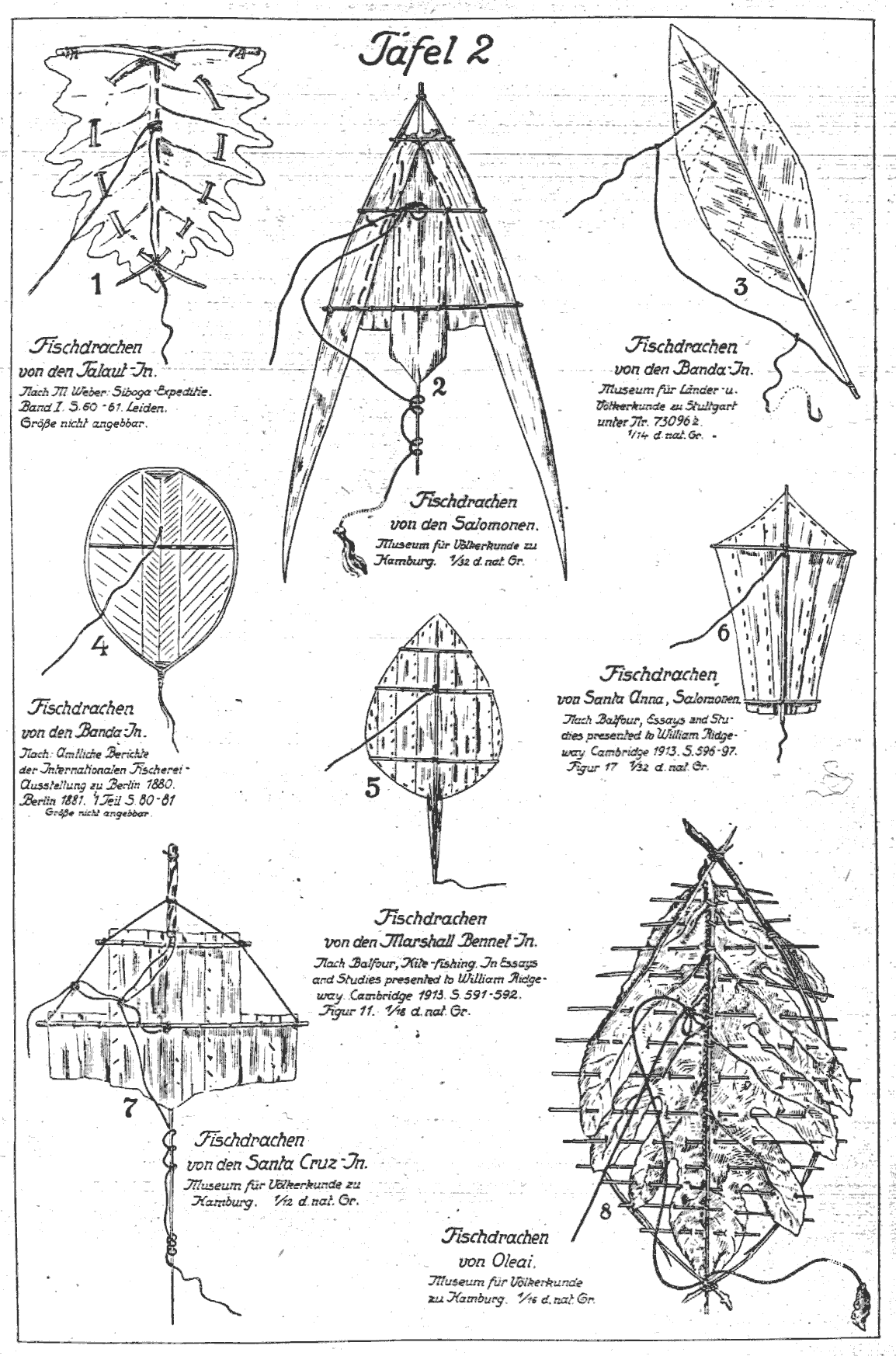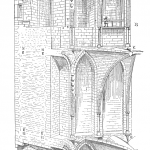When you pick your tomatoes, if you want to keep them longer, you have to find a way of reducing the temperature. As availability of electricity at village level can be a problem, ways have to be found to lower the temperature of this fragile crop. Some farmers at Dambatta in Kano State, Nigeria have used local mud bricks to make a very effective cooling chamber. Watch the video at AccessAgriculture. Via Practical Action.
Search Results for: bricks
Thermal Insulation of Solid-Walls is Underestimated
Approximately 5.7 million solid-walled houses exist in England, comprising 25% of the housing stock. Most were built between 1750 and 1914. Research shows that their energy efficiency has been underestimated for decades. [Read more…]
Pigeon Towers: A Low-tech Alternative to Synthetic Fertilizers
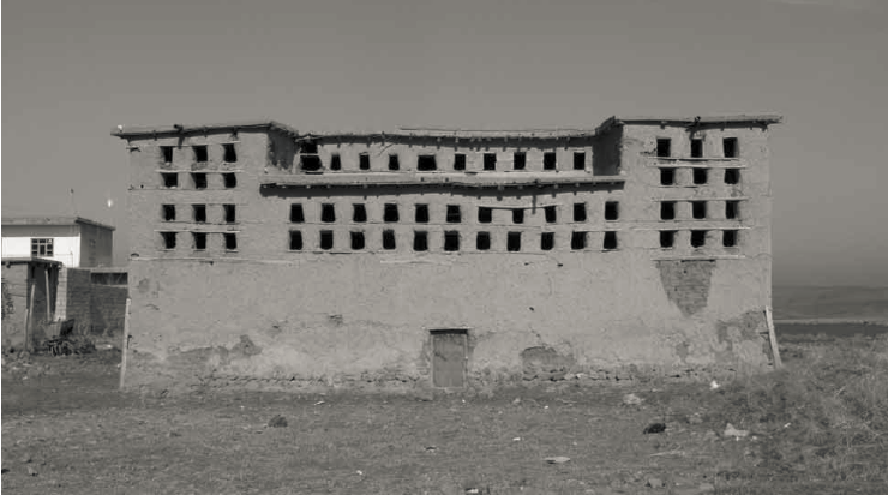 Photo credit: Bekleyen, A. (2009). The dovecotes of Diyarbakır: the surviving examples of a fading tradition. The Journal of Architecture, 14(4), 451-464..
Photo credit: Bekleyen, A. (2009). The dovecotes of Diyarbakır: the surviving examples of a fading tradition. The Journal of Architecture, 14(4), 451-464..
Many societies, ancient and contemporary, have innovated ways of supplying their fields with fixed nitrogen and phosphorus—two crucial ingredients for crop productivity. One is crop rotation, which alternates nitrogen-fixing and nitrogen-exhausting crops. Farmers around the world make use of chickens, ducks, and geese to add “fresh” guano to their fields. Cattle manure is another useful alternative—although it often lacks in phosphorus. Much more labor intensive than simply adding fossil-fuel derived synthetic fertilizer, these practices tend to build up soil, limit greenhouse gas emissions, and lead to less run-off into rivers, lakes, and oceans.
Persian pigeon towers are one of the more elegant solutions to the nitrogen-phosphorus problem. These are essentially castles built for thousands of wild pigeons, strategically placed in the middle of the fields. Their droppings were shoveled up once a year and sold to nearby farmers. While most pigeon towers existing today are in disrepair, the oldest still standing are dated to the 16th century (but they are assumed to have existed over 1,000 years ago) and helped fuel the cultivation of Persia’s legendary orchards, melons, and wheat production.[1] [Read more…]
Nubian Vaults
“The Nubian Vault technique is an age-old method of timberless vault construction, originating in upper Egypt. It uses only earth bricks and earth mortar. Nubian vaults built over 3,000 years ago at the Ramesseum mortuary temple, Luxor, are still standing. During the last ten years, Association La Voûte Nubienne (AVN) has successfully introduced a simplified, standardised version of this ancient technique in Burkina Faso, Mali, Senegal, and Zambia. This standardised technique is:
- Ecologically sustainable – no corrugated iron roofing sheets, nor timber beams, rafters, or supports;
- Carbon neutral – none of the construction materials are manufactured, or transported long distances, nor do any trees need to be cut down;
- Economically viable – only locally available raw materials (earth, rocks, and water) are used, favouring local economic circuits and self-sufficiency;
- Comfortable – due to the excellent thermal and acoustic insulation properties of earth construction;
- Durable – NV buildings have a far longer lifetime than those with corrugated iron and timber roofs, and maintenance is simple;
- Modular – applicable to a wide range of buildings (houses, schools, healthcentres…), of different styles (flat terrace roofs, two-storey buildings, courtyard buildings…), which are easily extendable;
- Vernacular – incorporating tradtional practices and aesthetics of earth architecture.
The major cost element in using the Nubian Vault method is labour, often provided by family members and neighbours on an exchange / barter / self-build basis, thus keeping cash in the local economy; the raw materials (earth, rocks, water) are locally available and ecologically sound; construction with mud bricks and mortar is traditional in the Sahel region – the innovation of vault construction can easily be incorporated into existing practice.”
More information, including building guidelines and house plans, at “La Voûte Nubienne” (website in English and French).
Previously:
The Sustainable Urban Dwelling Unit (SUDU)
The ‘Sustainable Urban Dwelling Unit’ (SUDU) in Ethiopia demonstrates that it is possible to construct multi-story buildings using only soil and stone. By combining timbrel vaults and compressed earth blocks, there is no need for steel, reinforced concrete or even wood to support floors, ceilings and roofs. The SUDU could be a game-changer for African cities, where population grows fast and building materials are scarce.
Timbrel Vaulting Using Cardboard Formwork
Lara Davis, Matthias Rippman and Philippe Block from the Swiss BLOCK Research Group at the ETH Zurich University have taken the centuries old timbrel vaulting technique one step further by incorporating high-tech design tools (software and CNC fabrication) and low-tech materials (cardboard boxes and wooden palettes).
Find pictures and the research paper here or see the summary below.
